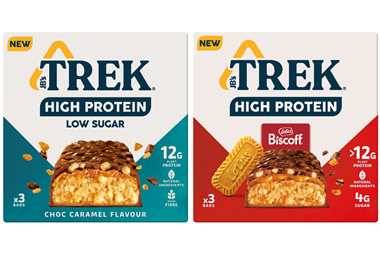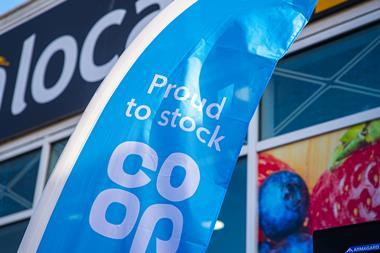It's the last word in effective consumer response.Jacob Bruun-Jensen and Jonty Shipley report
Ever since its debut in the mid 1990s, category management has proved effective in boosting like for like sales in stagnant or mature categories but only when retailers and manufacturers follow a strict best practice approach.
As many retailers have found, category management has not turned out to be a panacea. Results have proved highly variable in different stores and across different categories.
Where it all falls down is when retailers concentrate only on demand, neglecting to ensure that the necessary supply side elements are in place to put the product on the shelves. This results in pressure on the supply chain in terms of product availability and supply chain cost.
Product non availability is already a major problem, so any further threat has dramatic consequences.
In a recent consumer survey measuring product availability of the top 50 lines in three European countries, Roland Berger & Partners found availability varying from 92-98% with an average of 95%. For promotions, the figure was about 10% less.
Asked for their reactions, consumers said an out of stock would result in a lost sale 64% of the time. Even more serious, 25% of respondents said they would be willing to switch stores because of out of stocks a fact grossly underestimated by store managers.
Looking at the UK, a similar picture emerges. Using this magazine's weekly Grocer 33 list throughout 1999 as a rough proxy for the product availability of the major multiples, the average for the top five was 97.7% (January 1 to December 3) and that was only for 33 standard lines.
So what should be done? Retailers and manufacturers get ever diminishing returns from increasing product availability, so 100% availability at all times for all products in all stores is only achievable at intolerably high cost.
Retailers need to prioritise their investment in processes and have differentiated supply chains for different categories.
To combat the failings of category management, a new concept category logistics was unveiled at last April's ECR Europe conference.
Category logistics works in parallel with category management, providing it with the necessary supply chain resources to deliver the products to the shelves.
Its linchpin is differentiated supply chains for the categories defined by category management.
Supply chains are defined by working backwards from customers' needs at the shelf edge, with each supply chain being designed upstream to match requirements.
Categories are ranked in a similar order of importance as category management, with investment priorities and service levels set in a similar way. This means the categories of most importance to consumers get the best treatment.
To implement this concept, the supply chain status quo has to be assessed and the gap identified between its aim and its reality. Once the gaps have been understood, targets and measures can be put into place that deliver the required standards.
Differentiation on the supply side can start with the definition of the category role. For example, a destination category a major reason for customers to visit a store will require the most attention from retailer and supplier alike. Differentiation may involve separating stock according to category importance or allowing for premium service through emergency deliveries.
To decide what sort of supply chains are required, three criteria are normally used: turnover, volume and the ability to forecast accurately.
For large volume products, such as bulky nappies, crisps and kitchen towels, the design should revolve around reducing transportation costs, whereas for products with less accurate forecasting, responsiveness and lead time are the key.
Innovative strategies are essential in differentiating the category supply chains. This entails retailers and suppliers working in tandem on a range of aspects, from collaborative planning and forecasting and supplier-managed inventory to lead time and stockholding reductions, and efficient use of back hauling and space optimisation. However, just as in category management, this requires frank and open information sharing, and splitting equally the benefits of cooperation.
But the rewards are certainly there. Recent category logistics projects have shown that like for like sales can be increased by about 2.5% in mature and stagnant markets.
And that's surely something worth striving for.
Jacob Bruun-Jensen is a project manager and Jonty Shipley is a senior consultant at Roland Berger & Partners
{{FOCUS SPECIALS }}
Close menu
- Home
- Retail & Wholesale
-
Products & Suppliers
- Back to parent navigation item
- Products & Suppliers
-
Product Categories:
- Back to parent navigation item
- Product Categories:
- Alcoholic drinks
- Bakery
- Cereals & breakfast
- Cheese
- Chicken & poultry
- Chocolate
- Confectionery
- Crisps, nuts & snacks
- Dairy
- Fish
- Fresh produce
- Frozen
- Household
- Meat
- Own Label
- Sauces & condiments
- Seasonal
- Soft drinks
- Vaping
- Vegan & plant-based
- World foods
- Suppliers
- People
- Reports & Data
-
Topics A-Z
- Back to parent navigation item
- Topics A-Z
-
Popular topics:
- Back to parent navigation item
- Popular topics:
- Cost of living crisis
- Crime
- Deposit Return Schemes
- Finance
- Government & Regulation
- Health
- Inflation
- Loyalty
- Marketing
- Mergers & Acquisitions
- New Product Development
- Sourcing
- Supply chain
- Sustainability & environment
- Technology
- Ultra Processed Foods
- Vaping
- A-Z all topics
- Content by type:
- Events
- Subscribe now
Sign in to comment on this article
Not logged in before? Register for FREE guest access today.
You will be able to:
- Read more stories
- Receive daily newsletters
- Comment on stories
Advert



![XOXO-Product-Shot[ALL FLAVOUR]-Sky-1920x1080](https://dmrqkbkq8el9i.cloudfront.net/Pictures/274x183/4/9/2/355492_xoxoproductshotallflavoursky1920x1080_806584_crop.jpg)








![XOXO-Product-Shot[ALL FLAVOUR]-Sky-1920x1080](https://dmrqkbkq8el9i.cloudfront.net/Pictures/380x253/4/9/2/355492_xoxoproductshotallflavoursky1920x1080_806584_crop.jpg)




No comments yet